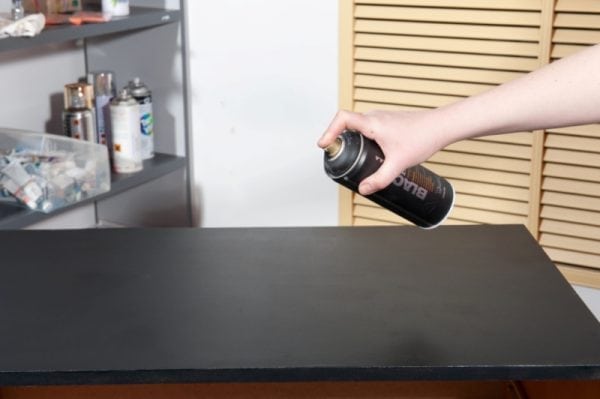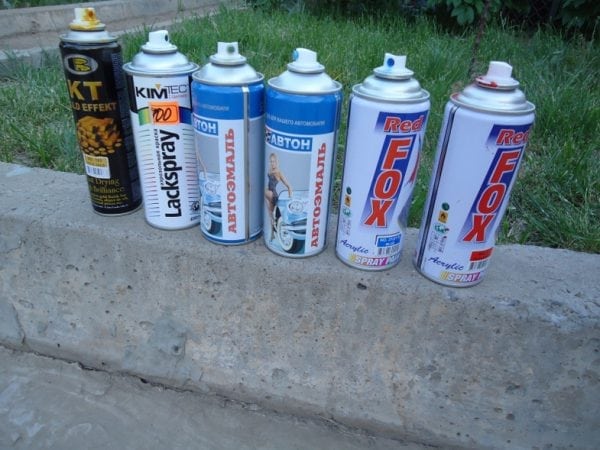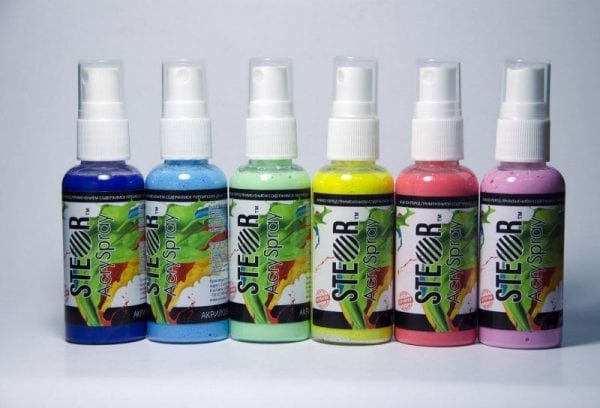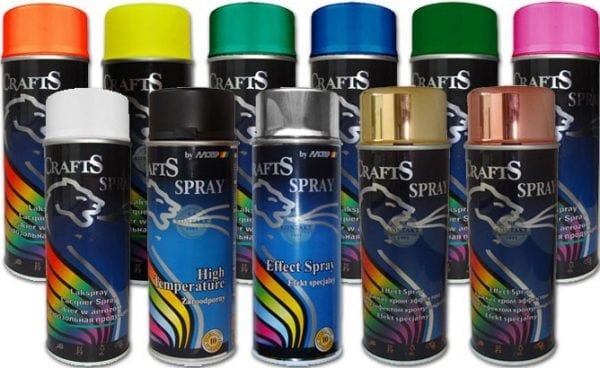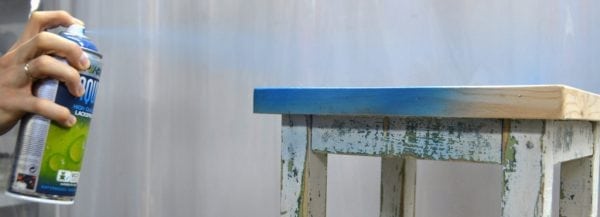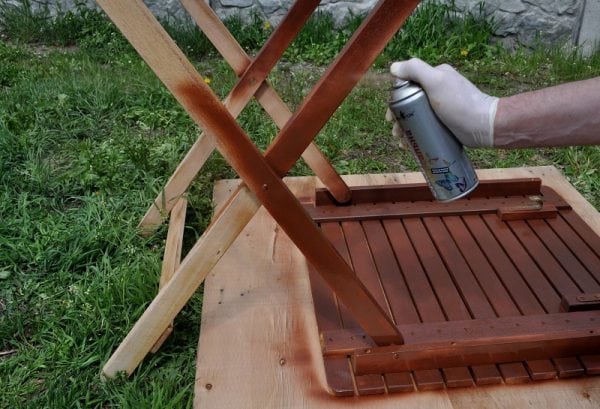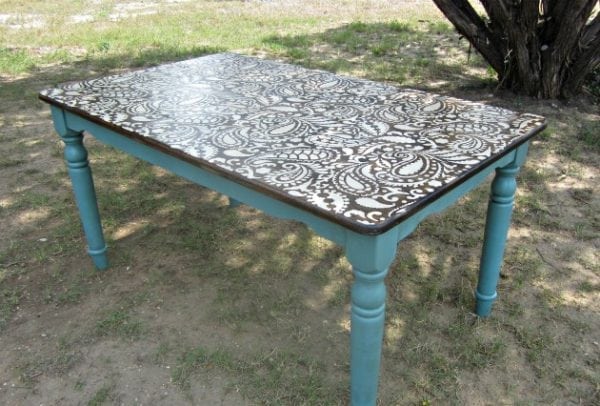Paint on wood in aerosol cans is presented in a wide range. Aerosol paints, in addition to the reliability of the coating, provide the application with an even thin layer, which is very difficult to achieve when treating the surface with ordinary paint using a brush or roller.
- The subtleties of wood processing
- Aerosol varieties
- Acrylic Sprays
- Alkyd-based aerosols
- Nitrocellulose enamels
- How to ensure proper application
- Pros and cons of using paintwork materials in the form of sprays
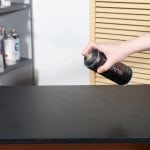
The subtleties of wood processing
Wood, due to its characteristics, requires special processing. The safety of the material during operation depends on a number of factors, among which:
- precipitation;
- temperature differences;
- exposure to sunlight, etc.
Without proper treatment from such aggressive effects, wood can deteriorate: crack, dry out or rot. To ensure reliable hydrophobic coating of lumber products, oil or alkyd enamel paints are usually used.
Recently there has been a tendency to stain wood with aerosol paints. This is due to the fact that when working with spray paints you will not have to deal with the application problems inherent in conventional formulations:
- the difficulty of applying a layer of the same thickness on the entire surface of the product;
- smudges;
- long drying time;
- the need for special painting tools (rollers, brushes, etc.)
In addition, when choosing paint in spray cans, there is no need to select a special composition for wood, since most aerosols are suitable for processing wood materials.
to contents ↑Aerosol varieties
Conventionally, all aerosol coatings can be divided into three groups: nitro enamel, alkyd and acrylic. Each of the varieties has a universal composition that can be used when working with any surface.
Aerosol-type paints have less adhesion compared to conventional coloring materials. However, this drawback does not matter when working with wood, since the nature of wood materials has a microrelief of the surface, which contributes to better adhesion of the paint.
to contents ↑Acrylic Sprays
This is the most common type of paint and varnish materials. It is also used for exterior decoration, and processing of interior details. Acrylics have the following advantages:
- the drying speed of the painted surface (for example, it will take no more than 20 minutes to completely dry one layer);
- the ability to choose the "finish": matte, semi-gloss, glossy;
- extensive color palette;
- ease of use;
- resistance to external factors (the coating is durable, not subject to fading).
In addition, unspent paint spray lasts longer than an opened can of ordinary paint. This will allow the use of an already started aerosol at a time when this becomes necessary.
to contents ↑Alkyd-based aerosols
Alkyd formulations have the same advantages as acrylic sprays. However, there are differences between them. Paints based on alkyd resins due to organic components are highly toxic, therefore, when working with such a composition, additional measures of individual protection are required (respirator, special safety glasses).
The alkyd surface has a significantly shorter life than acrylic. Such coverage will have to be updated at least once a year.
Alkyd enamels also have less adhesion due to their oil composition, so before painting the wood should be treated with a deep penetration primer.
But the choice of the palette is striking in a variety of shades and midtones.
to contents ↑Nitrocellulose enamels
This variety of paints and varnishes has the highest toxicity of all aerosol paints. This is due to cellulose nitrate being part of the composition. The use of a protective respirator is a necessary measure when working with such enamel. It is precisely because of the toxic composition that nitro enamels are prohibited for use in some countries.
However, due to the release of a large amount of organic substances during drying, this composition reduces the drying time and provides a glossy gloss of the coating. Drying speed also affects the application of paint. Therefore, it is important to pre-treat the surface. Using a high-quality primer and its correct application will increase the adhesion of the paint to the tree and get a durable coating that is resistant to fading. Among the advantages of nitroenamels is a relatively low cost.
to contents ↑How to ensure proper application
Each spray can contains detailed instructions. However, when processing wood, you must follow some recommendations:
- before painting, wood materials must be cleaned and polished to improve adhesion;
- only dried materials are suitable for painting (you should also make sure that there are no tar discharges);
- if it is necessary to treat the wood with a primer, it should be selected based on the composition of the paint;
- spraying the coloring composition is carried out at a distance of not more than 25 cm from the surface to be treated, but not less than 20 cm;
- the paint is applied in two layers, the second layer - only after the first has completely dried;
- Painting work should be carried out outdoors or in a room with good ventilation;
- paints in spray cans, like any other aerosols, are highly flammable, therefore it is unacceptable to work near open sources of fire.
Pros and cons of using paintwork materials in the form of sprays
The benefits of using aerosol paints include:
- absolute readiness of the paint for application (there is no need for special preparation of the composition, it is enough to shake the can thoroughly to achieve the correct consistency);
- there is no need to purchase additional paint products (baths, brushes, solvents);
- high adhesion (paint adheres well to the surface, without the formation of sagging and smears);
- the ability to process small parts (by spraying the composition, the paint penetrates into the smallest patterns without leaving unpainted areas);
- the ability to create decorative effects (patina, metallic, matte or glossy surface, mother of pearl, crackle, fluorescent coating).
Among the disadvantages of aerosols in the processing of wood, the following can be distinguished:
- The inability to independently create the desired shade by mixing colors and tinting. Although this disadvantage is offset by a wide range of color palettes, including various midtones.
- If the application technique is not followed, streaks or sagging may occur.However, improper staining can lead to similar problems when using conventional paints in cans.
- The need to use stencils to create a clear border staining. This drawback is also controversial, because when using canned paints, masking tape is also used to create even processing borders.
Aerosol paints on wood allow you to process products of any shape. You can use coloring sprays:
- during repairs for processing large surfaces;
- for the restoration of old products (for example, renew old wooden furniture or window frames);
- for decoration (for example, apply the image through a stencil or simply treat the surface with a decorative coating).
Aerosols have gained recognition and popularity among consumers due to their unique properties and undeniable advantages. But with all the advantages of using coloring sprays, do not forget about additional precautions when spraying the composition.

